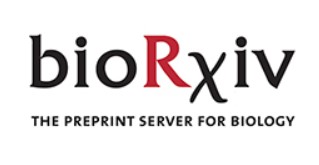Advanced Search
A Lentiviral Pseudotype ELLA for the Measurement of Antibodies Against Influenza Neuraminidase
Published: Jul 20, 2018 DOI: 10.21769/BioProtoc.2936 Views: 6277
Edited by: Longping Victor Tse Reviewed by: Masfique Mehedi
Abstract
This protocol describes the rapid and safe production of lentiviral pseudotypes characterized by a lentiviral core containing a reporter, in conjunction with avian influenza haemagglutinin (HA) and human neuraminidase (NA) glycoproteins on the surface. Production is optimized with Endofectin LentiTM transfection reagent in 6-well plate format. These pseudotyped viruses can be employed for serological assays of surface glycoproteins HA and NA. They can be efficiently used to perform the ELLA (Enzyme-linked lectin assay) to measure NA inhibiting antibodies in lieu of using reassortant virus or Triton X-100 inactivated wild-type virus as source of antigen, which may require higher biosafety levels.
Keywords: ELLABackground
The production of influenza virus pseudotypes has been extensively described previously (Nefkens et al., 2007; Temperton et al., 2007; Carnell et al., 2015). The need for a safe and rapid system to evaluate antibodies targeting the NA via the ELLA assay, avoiding the employment of reassortant mismatched virus or wild-type virus, has been met by producing influenza NA bearing pseudotypes (Prevato et al., 2015). A recent study (Biuso et al., 2017) confirmed that the co-expression of HA with NA improves the release of newly formed pseudotyped lentiviruses. Here we report a simple, widely applicable and optimized protocol for PV production by using the Endofectin LentiTM transfection reagent in 6-well plate format, and the methodology to perform an ELLA assay with the resulting influenza pseudotypes. While PV production for HA-based assays has made use of the lentiviral genome containing a reporter gene, the ELLA assay utilizes solely the surface NA glycoprotein, rendering a PV-incorporated reporter irrelevant to this protocol. The original ELLA assay from 1990 was recently improved (Couzens et al., 2014). This assay enables the detection of exposed galactose residues resulting from the enzymatic action of NA on sialic acids present on the fetuin substrate. This assay allows the measurement of NA inhibiting antibodies, through detection of a drop in enzymatic NA activity. The ELLA overcomes the limits of the cumbersome thiobarbituric acid assay (TBA) that employs hazardous materials, allowing for large-scale screening of serum samples. The basis of the assay is simple, 96-well plates are coated in the carbohydrate fetuin, which is then exposed to NA through NA bearing PV. The NA enzyme cleaves terminal sialic acid residues from the fetuin, exposing galactose that is then bound by the peanut agglutinin from Arachis hypogeal, conjugated to horseradish peroxidase (PNA-HRPO). This reagent then forms the basis for colorimetric reading of NA activity by a spectrophotometer. This activity can then be knocked down using an inhibitor (such as antibodies found in human sera) in subsequent assays. The described protocol combines the ability to screen a large number of sera through the ELLA assay, with a simple and safe lentiviral pseudotype production protocol. NA targeting antibodies are typically neglected in current influenza vaccines (compared to HA targeting antibodies), despite being shown to limit influenza symptoms and transmission (Marcelin et al., 2011 and 2012; Wohlbold and Krammer, 2014).
Materials and Reagents
- Multi Guard Barrier pipette tips 1-20 and 1-200 μl (Sorenson BioScience, catalog number: 30550T )
- NuncTM Cell-Culture Treated Multi dishes (6-well) (Thermo Fisher Scientific, Thermo ScientificTM, catalog number: 140675 )
- Microcentrifuge tube 1.5 ml
- Sterile syringes (10 ml), generic
- Millex-HA 0.45 μm filters (Merck, catalog number: SLHAM33SS )
- 96-well microtiter plates Maxi Sorp surface (Thermo Fisher Scientific, NuncTM, catalog number: 439454 )
- 96-well microtiter plates round-bottom, for dilutions (Thermo Fisher Scientific, NuncTM, catalog number: 267245 )
- Reservoirs (Fisher Scientific, catalog number: 11543412 )
- Aluminum foil (Household item)
- Falcon tube (15 ml, any supplier)
- HEK 293T/17 cells (ATCC, catalog number: CRL-11268 )
- Plasmids
- Glycoprotein expression plasmids: phCMV-H11 and pI.18-NA
- Lentiviral vector expressing firefly luciferase: pCSFLW
- Second-generation lentiviral packaging construct plasmid: p8.91 (expresses gag, pol and rev)
- Glycoprotein expression plasmids: phCMV-H11 and pI.18-NA
- Dulbecco’s modified Eagle medium (DMEM) (PAN-Biotech, catalog number: P04-04510 ) supplemented with 10% foetal bovine serum (FBS) (PAN-Biotech, catalog number: P40-37500 ) and 1% penicillin/streptomycin (P/S) (PAN-Biotech, catalog number: P06-07100 )
- Gibco Reduced Serum media Opti-MEM® (Thermo Fisher Scientific, catalog number: 31985047 )
- Endofectin LentiTM (Tebu-bio, catalog number: EFL1001-01 , EFL1001-02 )
- Phosphate-buffered saline (DPBS) for cell culture (Thermo Fisher Scientific, catalog number: 14040133 )
- Trypsin-EDTA (0.05%), phenol red (Thermo Fisher Scientific, GibcoTM, catalog number: 25300054 )
- Internal negative and positive serum controls [e.g., from the U.S Food and Drug Administration (FDA), the National Institute for Biological Standards and Control (NIBSC) or Consortium for the standardization of influenza seroepidemiology (CONSISE)]
- Coating buffer (KPL, catalog number: 50-84-01 )
- Fetuin (Sigma-Aldrich, catalog number: F3385 )
- BSA (Sigma-Aldrich, catalog number: A8327 )
- Tween 20 (Sigma-Aldrich, catalog number: P1379 )
- Lectin from Arachis hypogaea (peanut)-Peroxidase (PNA-HRPO) (Sigma-Aldrich, catalog number: L7759-1MG )
- DPBS-T (Sigma-Aldrich, catalog number: P3563-10PAK )
- o-Phenylenediamine dihydrochloride (OPD) (Sigma-Aldrich, catalog number: P8287 )
- 1 N Sulfuric acid (e.g., Fisher Scientific, Fisher ChemicalTM, catalog number: VL3171000 )
- Citrate Buffer (Sigma-Aldrich, catalog number: P4922 )
Equipment
- Class II biosafety cabinet (Thermo Fisher Scientific, Thermo ScientificTM, model: MSC-AdvantageTM Class II )
- Chemical hood
- Cell culture Incubator
- Water bath or heat block
- Plate sealer
- -80 °C freezer (e.g., Thermo Fisher Scientific, model: TSX ULT )
- Electronic serological pipette (e.g., Gilson, model: MACROMAN® )
- Pipettes (Gilson, models: PIPETMAN® Classic P2, P20, P200 and P1000, catalog numbers: F144801 , F123600 , F123601 and F123602 )
- Multichannel pipettes (e.g., Gilson, model: PIPETMAN® L Multichanel, 8 or 12 channels)
- Plate centrifuge (ELMI, model: SkySpinTM CM-6MT )
- Spectrophotometer for ELISA plate reading (e.g., Tecan Trading, model: SunriseTM )
- Inverted microscope (e.g., OLYMPUS, model: IX53 )
Procedure
Category
Immunology > Antibody analysis > Antibody function
Immunology > Antibody analysis > Antibody-antigen interaction
Biochemistry > Protein > Immunodetection
Do you have any questions about this protocol?
Post your question to gather feedback from the community. We will also invite the authors of this article to respond.
Share
Bluesky
X
Copy link



